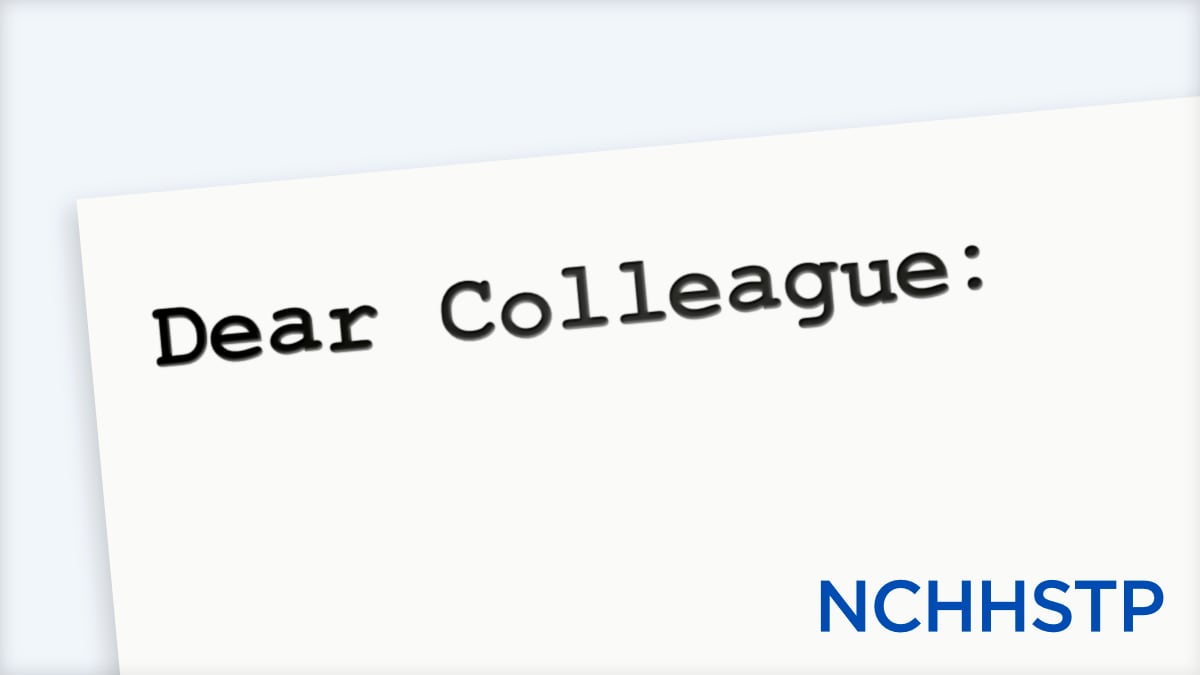At a glance
As we celebrate progress in HIV prevention among women, we also highlight the challenges, barriers, and disparities women continue to face. This letter discusses trends, disparities, prophylaxis, and some of CDC's prevention efforts.

Cear Colleague
March 10, 2022
Today is National Women and Girls HIV/AIDS Awareness Day (NWGHAAD), sponsored by the U.S. Department of Health and Human Services' Office on Women's Health. As we celebrate progress in HIV prevention among women, we also highlight the challenges, barriers, and disparities women continue to face. This year, on NWGHAAD, we encourage you to join us as we strengthen our commitment to improving women's access to HIV testing, treatment, and prevention.
In 2019, women accounted for 18% (6,400) of estimated new HIV infections in the United States. Although there was no significant change in estimated new HIV infections among women overall between 2015 and 2019, the annual number of new infections is moving in the right direction (from 6,800 in 2015 to 6,400 in 2019). Major racial disparities exist; a signal that HIV prevention and treatment are still not reaching all women who could benefit. Black or African American women (hereafter referred to as African American women) made up more than half (53%; 3,400) of estimated new HIV infections among all women in 2019. Transgender women are also disproportionately affected by HIV. Among transgender women interviewed in seven US cities in 2019-2020, 42% reported having HIV. Among African American transgender women, 62% reported having HIV, and among Hispanic/Latina transgender women, 35% reported having HIV.
It is important for all women to get tested and know their HIV status, so they can get the care they need to stay healthy. Women with HIV should have access to HIV treatment (i.e., antiretroviral therapy [ART]) and comprehensive care services that support them to ensure their optimal health and achieve viral suppression. Staying virally suppressed or having an undetectable viral load is a critical step people with HIV can take to protect their health. Beyond protecting their personal health, having an undetectable viral load prevents HIV transmission during sex and reduces the chance of transmission to a baby during pregnancy and childbirth to 1% or less. Women without HIV can benefit from proven prevention options such as post-exposure prophylaxis (PEP) and pre-exposure prophylaxis (PrEP). However, some women don't know of or have access to these powerful tools.
In 2019, only 35% of heterosexually active women without HIV surveyed in 23 US cities were aware of PrEP. Furthermore, only 10% of women in the United States who could benefit from PrEP were prescribed PrEP. Since the vast majority (83%) of estimated new HIV infections among women can be attributed to heterosexual contact, it is particularly important for women to learn about the benefits of PrEP. To help raise awareness and PrEP uptake, health care providers should follow CDC's updated PrEP guideline to inform all sexually active people about PrEP.
Through a whole-of-society approach to ending the HIV epidemic, CDC is collaborating with local organizations to increase the availability and use of PrEP among populations who could benefit most, including African American women and all transgender women. Expanding and improving access to PrEP is one of many strategies outlined in the 2022-2025 National HIV/AIDS Strategy (NHAS), and CDC is committed to achieving the NHAS vision by reinforcing our current HIV prevention efforts and implementing new interventions. Some of CDC's HIV prevention efforts that address HIV among women include
- Advancing the Ending the HIV Epidemic in the U.S. initiative by making sure communities have the expertise and resources they need to address the barriers that contribute to gaps in HIV prevention and care. For example, CDC works with state and local health departments to fund PrEP-related activities such as PrEP awareness, education, and other ancillary support services.
- Funding and supporting state, territorial, and local health departments and community-based organizations to conduct HIV surveillance and increase access to prevention services that reach populations most affected by HIV, including women.
- Collecting better data on HIV by gender through CDC's surveillance systems. For example, the National HIV Behavioral Surveillance (NHBS) report provides data on HIV prevalence, access to care, and the use of HIV prevention services among transgender women.
- Identifying evidence-based interventions and best practices through CDC's HIV Prevention Research Synthesis (PRS) Project. The PRS Project has identified several interventions for women, including Adult Special Care Clinics, Project Shikamana, and Coupons for Free HIV Self-Tests.
- Equipping communities, partners, and health care providers with the resources they need to promote HIV prevention, testing, and treatment through its Let's Stop HIV Together. The campaign has a focused initiative for women called She's Well: PrEP for Women that provides information and resources on the benefits of PrEP. There are also PrEP resources for health care providers on prescribing PrEP and increasing PrEP use among people who could benefit from it.
As we celebrate our progress today, we also reaffirm our commitment to ensuring all women have access to high-quality health care and HIV prevention tools such as HIV treatment and PrEP. We call on you to join us as we work to overcome social and structural barriers to HIV prevention, testing, and treatment, that drive disparities among women.
Your partnership is critical to our ongoing work to end the HIV epidemic in the United States. Help us promote NWGHAAD by visiting our digital toolkit and downloading and sharing materials on social media using the #StopHIVTogether and #NWGHAAD hashtags. Together, we can end HIV and ensure a healthier future.
Sincerely,
/Demetre Daskalakis/
Demetre Daskalakis, MD, MPH
Director, Division of HIV Prevention
National Center for HIV, Viral Hepatitis, STD, and TB Prevention
Centers for Disease Control and Prevention
www.cdc.gov/hiv
